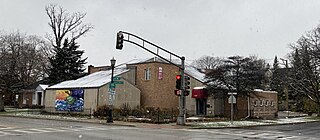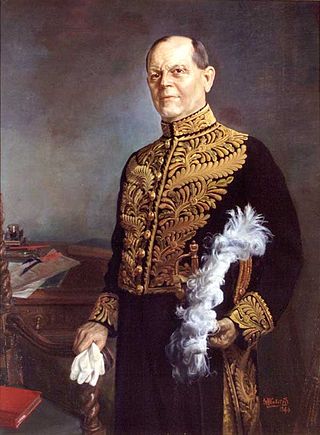
A blouse is a loose-fitting upper garment that may be worn by workmen, peasants, artists, women, and children. It is typically gathered at the waist or hips so that it hangs loosely ("blouses") over the wearer's body. Today, the word most commonly refers to a girl's or woman's dress shirt, although there is considerable confusion between a true blouse and a women's shirt. It can also refer to a man's shirt if it is a loose-fitting style, though it rarely is. Traditionally, the term has been used to refer to a shirt which blouses out or has an unmistakably feminine appearance, although even many "standard" shirts today have a somewhat blousy fit, and the numbers of men wearing such shirts may match that of women wearing actual blouses.

A kaftan or caftan is a variant of the robe or tunic. Originating in Asia, it has been worn by a number of cultures around the world for thousands of years. In Russian usage, kaftan instead refers to a style of men's long suit with tight sleeves.

1860s fashion in European and European-influenced countries is characterized by extremely full-skirted women's fashions relying on crinolines and hoops and the emergence of "alternative fashions" under the influence of the Artistic Dress movement.

Hovenweep National Monument is located on land in southwestern Colorado and southeastern Utah, between Cortez, Colorado and Blanding, Utah on the Cajon Mesa of the Great Sage Plain. Shallow tributaries run through the wide and deep canyons into the San Juan River.

Navajo National Monument is a National Monument located within the northwest portion of the Navajo Nation territory in northern Arizona, which was established to preserve three well-preserved cliff dwellings of the Ancestral Puebloan people: Keet Seel, Betatakin, and Inscription House. The monument is high on the Shonto plateau, overlooking the Tsegi Canyon system, west of Kayenta, Arizona. It features a visitor center with a museum, three short self-guided trails, two small campgrounds, and a picnic area.

The Mitchell Museum of the American Indian is a museum in Evanston, Illinois that focuses exclusively on the history, culture and arts of North American native peoples. It is a Core Member of the Chicago Cultural Alliance, a consortium of 25 ethnic museums and cultural centres in Chicago.

Fashion in the period 1550–1600 in European clothing was characterized by increased opulence. Contrasting fabrics, slashes, embroidery, applied trims, and other forms of surface ornamentation remained prominent. The wide silhouette, conical for women with breadth at the hips and broadly square for men with width at the shoulders had reached its peak in the 1530s, and by mid-century a tall, narrow line with a V-lined waist was back in fashion. Sleeves and women's skirts then began to widen again, with emphasis at the shoulder that would continue into the next century. The characteristic garment of the period was the ruff, which began as a modest ruffle attached to the neckband of a shirt or smock and grew into a separate garment of fine linen, trimmed with lace, cutwork or embroidery, and shaped into crisp, precise folds with starch and heated irons.

Court uniform and dress were required to be worn by those in attendance at the royal court in the 19th and early 20th centuries.

Canyons of the Ancients National Monument is a national monument protecting an archaeologically significant landscape located in the southwestern region of the U.S. state of Colorado. The monument's 176,056 acres (712.47 km2) are managed by the Bureau of Land Management, as directed in the presidential proclamation which created the site on June 9, 2000. Canyons of the Ancients National Monument is part of the National Landscape Conservation System, better known as the National Conservation Lands. This system comprises 32,000,000 acres (130,000 km2) managed by the Bureau of Land Management to conserve, protect, and restore these nationally significant landscapes recognized for their outstanding cultural, ecological, and scientific values. Canyons of the Ancients encompasses and surrounds three of the four separate sections of Hovenweep National Monument, which is administered by the National Park Service. The monument was proclaimed in order to preserve the largest concentration of archaeological sites in the United States, primarily Ancestral Puebloan ruins. As of 2022, over 8,500 individual archeological sites had been documented within the monument.

The Armenian Taraz, also known as Armenian traditional clothing, reflects a rich cultural tradition. Wool and fur were utilized by the Armenians along with the cotton that was grown in the fertile valleys. During the Urartian period, silk imported from China was used by royalty. Later, the Armenians cultivated silkworms and produced their own silk.
A timeline of Chacoan history includes Chaco Culture National Historical Park, Aztec Ruins National Monument, Twin Angels Pueblo, Casamero Pueblo, Kin Nizhoni, Pierre's Site, and Halfway House.

A dress is a garment traditionally worn by women or girls consisting of a skirt with an attached bodice. It consists of a top piece that covers the torso and hangs down over the legs. A dress can be any one-piece garment containing a skirt of any length, and can be formal or casual.

The history of Italian fashion is a chronological record of the events and people that impacted and evolved Italian fashion into what it is today. From the Middle Ages, Italian fashion has been popular internationally, with cities in Italy producing textiles like velvet, silk, and wool. During the Middle Ages and Renaissance, Italian fashion for both men and women was extravagant and expensive, but the fashion industry declined during the industrialization of Italy. Many modern Italian fashion brands were founded in the late 19th and early 20th centuries, and in the 1950s and 1960s, Italian fashion regained popularity worldwide. While many clients of Italian fashion designers are celebrities, Italian fashion brands also focus on ready-to-wear clothes.

The Pueblo I Period was the first period in which Ancestral Puebloans began living in pueblo structures and realized an evolution in architecture, artistic expression, and water conservation.

The Basketmaker culture of the pre-Ancestral Puebloans began about 1500 BC and continued until about AD 750 with the beginning of the Pueblo I Era. The prehistoric American southwestern culture was named "Basketmaker" for the large number of baskets found at archaeological sites of 3,000 to 2,000 years ago.

Cynthia Irwin-Williams was an archaeologist of the prehistoric American Southwest. She received a B.A. in Anthropology from Radcliffe College in 1957; the next year she received a M.A. in the same field. In 1963 she completed her educational career in Anthropology with a PhD. from Harvard University. Beginning her career in the 1950s, Irwin-Williams was considered a groundbreaker for women in archaeology, like her friend and supporter Hannah Marie Wormington.

Art of the American Southwest is the visual arts of the Southwestern United States. This region encompasses Arizona, New Mexico, and parts of California, Colorado, Nevada, Texas, and Utah. These arts include architecture, ceramics, drawing, filmmaking, painting, photography, sculpture, printmaking, and other media, ranging from the ancient past to the contemporary arts of the present day.

The Ancestral Puebloans, also known as the Anasazi, were an ancient Native American culture that spanned the present-day Four Corners region of the United States, comprising southeastern Utah, northeastern Arizona, northwestern New Mexico, and southwestern Colorado. They are believed to have developed, at least in part, from the Oshara tradition, which developed from the Picosa culture. The people and their archaeological culture are often referred to as Anasazi, meaning "ancient enemies", as they were called by Navajo. Contemporary Puebloans object to the use of this term, with some viewing it as derogatory.

William D. Lipe, also known as Bill Lipe, is an archaeologist known for his work in the American Southwest and his Conservation Model. Lipe has contributed to Cultural Resource Management (CRM) and public archaeology. In addition to this, he has done work with the Glen Canyon Project, the Dolores Archaeological Program, and the Crow Canyon Archaeological Center.

The wardrobe of Mary, Queen of Scots, was described in several contemporary documents, and many records of her costume have been published.
Spain, James N. “Navajo Culture and Anasazi Archaeology: A Case Study in Cultural Resource Management.” Kiva, vol. 47, no. 4, Summer 1982, pp. 273–78. EBSCOhost, https://doi-org.avoserv2.library.fordham.edu/10.1080/00231940.1982.11760576.


















